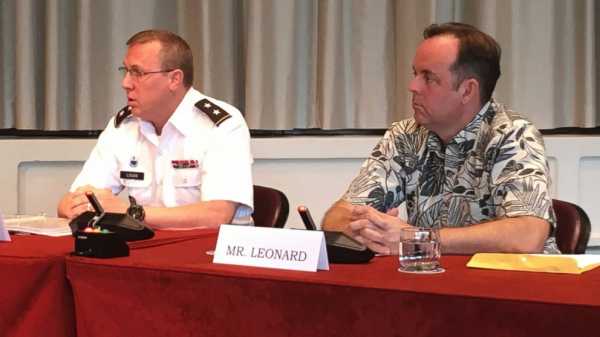
Hawaii emergency management Agency has begun to implement its plan for responding to rocket attacks before he was completely composed, said Thursday a senior official at the hearings about why the Agency mistakenly sent in January mobile phone and alerts on the Islands.
“We started to fly the plane before we made the whole plan,” mayor Arthur “Joe” Logan, the head of the State Department of defense, said at a hearing of the U.S. Senate Committee hearing in Honolulu.
Logan told deputies he felt it was necessary to implement the plan, given the repeated North Korea’s ballistic missile and nuclear tests, and threats in the direction of Hawaii.
The plan also involves helping the state to survive a possible attack.
US Senator Brian Schatz of Hawaii held a hearing to understand how and why the false alert was sent.
Logan said the Agency expected to develop a plan in three stages. The first involved conducting outreach and expedite public notification in the event of an attack.
In the second phase, the Agency intends to talk with the participants about how best to respond and recover from attacks. The third stage was to write a plan.
Logan said false alarm January came because the Agency is missing some protocols to avoid such mistakes and immediately correct them.
Schatz, a Democrat and ranking member of the Senate Subcommittee on communications, information technology, innovation and the Internet, has proposed a bill that would give the Federal government full responsibility for the processing of missile warning.
In January, the Committee of the whole considered the political problems associated with the use and effectiveness of the current warning system after a false alert residents of Hawaii and visitors to the state. Schatz also requested the field hearing.
Schatz and other Hawaii lawmakers at the hearing acknowledged that emergency alerts for hurricanes and other natural disasters, issued by the local governments and state governments.
But Schatz said there’s no reason not to warn all Americans, if a ballistic missile headed for the United States.
“This is a Federal by definition,” said Schatz.
USA. Tulsi Gabbard asked rear Adm. Patrick Piercey, Director of Pacific command operations, why his team will not directly inform the people of Hawaii, if there is a missile attack, not through the Agency of emergency situations of the state.
Piercey said already, there are agencies that have the authority to do this.
Hawaii Agency of emergency the employee of management has written to the incorrect warning during a workout.
Later, officials announced that the employee does not think that he and his colleagues participate in exercises and instead believed the real attack was inevitable. The state fired him.
It took the Agency 38 minutes to send a message to a mobile phone notifying people that the warning was a mistake, partly because the Agency was not prepared the message, it can send a false alarm. The Agency representatives will be notified of earlier radio stations.
Within a few hours after the alert, the Agency changed the protocols, requiring that two people to send an alert. He has also made it easier to cancel a warning about preparing a pre-programmed alarm message.
The emergency management Agency has suspended its campaign of readiness of ballistic missiles, including the monthly test siren alert.
Jessica is now a Commissioner on the Federal communications Commission, said at the hearing that the plan emergency alarm systems Hawaii for alerts is more than 10 years.
She said that the States file their plans with the FCC and these plans annually confirmed.
She said that the FCC must ensure that these plans are warning broadcasters to date.
Sourse: abcnews.go.com






